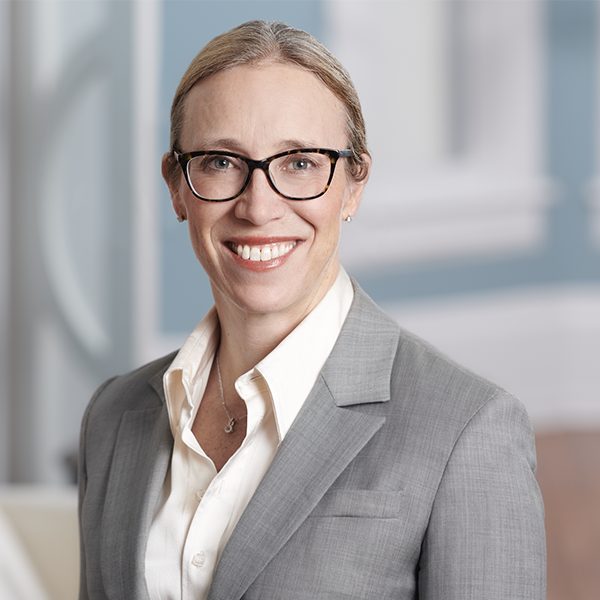The Agenda
MAINSTREAM Summit - 18 March 2026 • Perth Convention Centre
Registration, Tea & Coffee and Exhibition Viewing
Comma separated speakers , company will appear here when published
Registration, Tea & Coffee and Exhibition Viewing
Welcome to Country & MAINSTREAM Summit Opening
Comma separated speakers , company will appear here when published
Welcome to Country & MAINSTREAM Summit Opening
Closing the Gap Between AI Noise and Real Results in Maintenance, Reliability & Asset Management
Comma separated speakers , company will appear here when published
While 72% of Australian asset-intensive organisations are racing to implement AI in maintenance and reliability, only 23% are seeing meaningful returns. This isn't a technology problem. It's an organisational one, and it's not limited to this industry. The companies winning with AI aren't just deploying smarter algorithms; they're fundamentally restructuring how humans and machines collaborate, make decisions, and create value.
With practical examples, you'll discover why organisations are struggling with AI projects and how those that are thinking beyond the pilot are more rapidly able to unlock the potential that AI promises. Drawing from real-world case studies across a variety of industries, we'll explore:
Regardless of your role, this session will help you influence your organisational roadmap for turning AI potential into operational reality. Be the person who uses AI to your advantage, not the person who has the fear of being obsolete.
- The gap between the promise and reality with AI
- What foundational elements are critical for success
- The key enablers for the human-AI workforce of the future
- Practical strategies to build AI readiness
Artificial Intelligence Integration: Opportunities and Implementation Challenges
AI Integration

Director of Human Centred Change
Salesforce
Closing the Gap Between AI Noise and Real Results in Maintenance, Reliability & Asset Management
The AI Reality Check – Overcoming Barriers to Intelligent Maintenance Adoption
Comma separated speakers , company will appear here when published
Artificial Intelligence is reshaping the conversation in maintenance and reliability, promising predictive accuracy, automated insights, and data-driven transformation. Yet, across industries, a consistent reality is emerging: AI initiatives often falter not because of the technology itself, but because of the organisational, cultural, and infrastructure barriers that surround it. While 72% of asset-intensive organisations are exploring AI applications, more than three-quarters fail to achieve expected returns — revealing a growing gap between business ambition and operational readiness.
Many organisations underestimate the infrastructure required to support AI. From insufficient network capacity to unprepared data environments, implementation frequently exposes foundational weaknesses rather than delivering breakthroughs. Participants describe cases where “intelligent” systems crashed networks or overwhelmed servers, and where data streaming requirements far exceeded what existing IT environments could sustain. The lesson is clear: before AI can transform maintenance, the groundwork — infrastructure, governance, and data integrity — must be solid.
Beyond technology, the greatest obstacles lie in trust, culture, and capability. Maintenance professionals with decades of experience often struggle to accept algorithmic insights that contradict their hard-earned intuition. When AI systems miss obvious faults or produce outputs that technicians cannot interpret, confidence erodes rapidly. These experiences underscore the need for human-AI collaboration models that augment — rather than replace — engineering judgement. As one participant noted, “AI amplifies everything — including your data quality problems.” Without strong foundations and skilled interpretation, AI risks accelerating poor decisions instead of improving them.
This panel will bring together industry experts who have navigated both the promise and pitfalls of AI in maintenance. Panellists will discuss what separates successful implementations — such as drone-based inspections, automated defect detection, and predictive analytics — from those that stall. Attendees will gain insight into the cultural, technical, and ethical dimensions of AI adoption, and how to prepare their organisations for meaningful, trustworthy integration. The session invites an honest conversation about what it truly takes to move from AI hype to operational value.
AI Integration and Adoption Barriers
AI Integration

Director of Human Centred Change
Salesforce

CEO
Simulia

Senior Manager Integrated Operations AI Delivery
Fortescue

Managing Director
Industry X, Accenture

Director
WA Data Science Innovation Hub
The AI Reality Check – Overcoming Barriers to Intelligent Maintenance Adoption
Morning Tea (sponsored by CYIENT), Exhibition Viewing & Innovation Theatres
Comma separated speakers , company will appear here when published
Morning Tea (sponsored by CYIENT), Exhibition Viewing & Innovation Theatres
Keeping Maintenance Skills In-House: From Competencies to Capability
Comma separated speakers , company will appear here when published
Australian industrial organisations are facing critical workforce, knowledge, and capability gaps. With 62% reporting acute shortages in maintenance and reliability roles, and nearly 40% of technical know-how leaving annually due to retirement and turnover, retaining skills isn’t just an HR issue, it’s an operational imperative. This session explores practical methods for translating core competencies into everyday capability, bridging generational knowledge divides, and building resilient teams ready for evolving digital, decarbonisation, and business demands. Attendees will walk away with actionable ideas for keeping knowledge in-house, reducing costly misalignment, and unlocking real business impact.
Workforce Capability and Knowledge Preservation
Knowledge Preservation

Global Leadership & Talent Development, Engine/ITS
Amazon (US)
Keeping Maintenance Skills In-House: From Competencies to Capability
Optimising Rail Shutdowns: Data, Mindset, and Stakeholder Alignment in a Customer-Centric Network
Comma separated speakers , company will appear here when published
Managing rail shutdowns comes with several key challenges, many of which are common across industries. The challenges faced required significant change management, stakeholder engagement and problem solving. There was a disconnect in the team around buy-in for what is best for business, lacking a customer focused approach, and a change resistant attitude. Additionally, there was a perception that closure performance was consistently poor/overrunning against plan and a lack of data to verify or analyse if this perception was reality.
Coming from a mining background into rail, I identified that these challenges required a data approach, shift in team mindset and stakeholder engagement.
Over the last 12 months, we have:
- Developed a performance reporting framework identifying trends, gaps and opportunities
- Shifted team culture toward continuous improvement and customer impact
- Enhanced transparency with timely updates to external stakeholders
- Refined recovery planning for real-time decisions balancing reliability and throughput
- Implemented proactive measures in a reactive environment
- Established a team mindset that maximizes decision-making under time pressure
- Used data and communications to support both planned and unplanned situations
Data Governance, Quality and Utilisation
Data Governance

Superintendent Integrated Closures
Aurizon
Optimising Rail Shutdowns: Data, Mindset, and Stakeholder Alignment in a Customer-Centric Network
Capturing Better Foundational Data to Transform Maintenance at Pace
Comma separated speakers , company will appear here when published
Using data and technology to completely alter the way we do maintenance has never been so topical as it is today, and yet, we haven’t really seen any big transformations in this space to date. On one side, we have an overload of available data, to enable us to make these radical changes, and on the other, we have foundational work practices, that can significantly impact the usefulness and accuracy of this data, and in turn, the positive impact in the maintenance domain.
- The importance of strong work practices, in the realms of quality data
- Why do work management processes fail
- Some key actions you can take to address these gaps
- How better data from a strong foundational base can improve pace of change in maintenance
- Worked example of this in practice
Data Governance, Quality and Utilisation
Data Governance

Group Manager Asset & Materials Management
Fortescue
Capturing Better Foundational Data to Transform Maintenance at Pace
Reliability in Action: Designing Maintenance Builds for Seamless Startup
Comma separated speakers , company will appear here when published
Maintenance builds often emphasise data loading over long-term reliability. In Pluto Train 2, we reversed that approach by embedding reliability principles from the start—aligning maintenance strategies, spares, and procedures with operational needs. Structured against ISO 14224 standards, the build achieved consistency, compliance, and a strong foundation for analytics. This reliability-first strategy delivered seamless Day 1 operations, minimised rework, and created enduring asset performance.
- Applied key reliability techniques across large equipment base
- Built fit-for-purpose maintenance build tool to support planning
- Conducted on-site equipment surveys to fill critical data gaps
- Structured data in alignment with ISO 14224
- Integrated assurance processes to reduce handover risks
Data Governance, Quality and Utilisation
Data Governance

Pluto Expansion Maintenance Build Lead
Woodside
Reliability in Action: Designing Maintenance Builds for Seamless Startup
Plant Reliability in Dollars & $ense
Comma separated speakers , company will appear here when published
This keynote frames reliability in financial terms - highlighting how a well-executed reliability management strategy influences profit, return on net assets (RONA) and share price. You will see the difference between the industry leaders and laggards and learn how to close the gaps to turn the potential benefits into real profit. This is not a maintenance seminar. Rather, we take a cross functional look at reliability management and link it to key financial performance indicators.
- Relate plant reliability to profit, return on net assets (RONA), share price and other key financial performance indicators.
- See the cross-functional nature of process reliability management – it is not all about maintenance.
- Move beyond thinking in terms Overall Equipment Effectiveness (OEE) to Overall Business Effectiveness (OBE) to manage reliability across the entire value stream.
- Delve into the human factors of failure, including psychological and social psychological drivers.
- Design for reliability, maintainability, operability, and flexibility the genetic code of the manufacturing process.
- Operate for reliability, including supply chain management and customer/SKU rationalisation.
- Maintain for reliability.
- Deploy a comprehensive and lasting reliability management strategy that drives value for your shareholders.
Reliability Function Positioning and Development
Reliability Function

Contributing Editor
Reliable (US)
Plant Reliability in Dollars & $ense
Beyond the Hype: Delivering on the AI 2.0 Promise in Asset Management
Comma separated speakers , company will appear here when published
It’s AI Jim, but not as we know it. The first generation of the AI revolution has delivered some well-worn paths in advancing the science of condition monitoring, improving our ability to diagnose, predict and track asset health. But the delivery of real outcomes from this has been patchy. For every Rolls Royce there are half a dozen tales of woe. A thousand seeds never germinating. Promises stuck in pilot purgatory. Ivory tower technology teams that never made it into the field, working on problems that nobody cares about, while site teams continue to trudge through a wasteland of broken SAP forms and unmanaged master data.
The opportunity: the next generation of AI technologies will continue to transform what is possible. Agents and GPT-type AI models offer the potential to extend the art of the possible from narrow analytical and predictive tasks into the flexible automation of the broader asset management workflow. Our challenge: driving the asset management transformation required to deliver on this promise will grow increasingly complex, as the range of skills, technologies and teams required to deliver measurable outcomes grows increasingly diverse.
In this session we will take you through the promise of AI 2.0, the potential for the frontier of asset management and explore some examples and lessons learned in delivering these outcomes in the field from two and a half years within Fortescue.
AI Integration and Adoption Barriers
AI Integration

Senior Manager Integrated Operations AI Delivery
Fortescue
Beyond the Hype: Delivering on the AI 2.0 Promise in Asset Management
Maintenance Excellence – A Reliability Journey
Comma separated speakers , company will appear here when published
Maintenance is no longer just about keeping the lights on. How you manage your assets directly impacts your company's bottom line and market position. This presentation shares the real story of transforming a reactive maintenance operation into a reliability-focused organisation.
Phil is the Chief Maintenance Officer at United Utilities, the UK's largest listed water company. Phil will walk you through what actually worked, what didn't, and the hard-earned lessons from building a structured excellence program from the ground up.
Baseline Assessment – Getting an accurate picture of where you really stand (not where you think you stand) in terms of maintenance practices, skills gaps, and organisational readiness
Building Your Roadmap – Creating a practical transformation plan with realistic milestones and getting buy-in from operations, finance, and the shop floor
Dealing with Reality – Why your plan won't survive first contact, and how to adapt when priorities shift, resources get cut, or equipment breaks at the worst possible time
Getting Everyone Speaking the Same Language – Breaking down silos between maintenance, operations, and engineering so reliability becomes everyone's job
Upskilling Your Team – Practical approaches to training and knowledge transfer that actually stick
Leading Through Change – Maintaining credibility while driving improvement, dealing with sceptics, and recognizing progress along the way
Work Management, Maintenance Fundamentals and Business Process Optimisation
Work Management Fundamentals

Chief Maintenance Officer
United Utilities (UK)
Maintenance Excellence – A Reliability Journey
From Worthless Data to Intelligent Assets: Edge Federated ML in Real-World Asset Management
Comma separated speakers , company will appear here when published
Asset-intensive organisations have invested heavily in enterprise asset management systems and condition monitoring infrastructure, yet most operational data remain underutilised. This presentation challenges the conventional centralised analytics approach and introduces edge federated machine learning as a transformative architecture for physical asset management.
Drawing from real-world implementations across Australian transport, ports, and heavy industry, this session demonstrates how edge computing combined with federated learning solves four critical barriers to intelligent maintenance:
- Isolated asset knowledge that prevents fleet-wide learning
- Data silos across facilities that block insight sharing
- Cloud analytics latency that misses split-second failure indicators
- Privacy concerns that lock away valuable operational data
Data Governance, Quality and Utilisation
Data Governance

Managing Director
SAS Asset Management
From Worthless Data to Intelligent Assets: Edge Federated ML in Real-World Asset Management
Stopping the Bleeding: Implementing Tight Commercial Controls to Eliminate Scope Creep and Contractor Overspend
Comma separated speakers , company will appear here when published
This presentation draws on the Commercial Management module of Shutdown School to address critical financial pitfalls associated with major shutdown events, where costs can represent 60–80% of an annual maintenance budget. Shutdowns frequently rely on transient contractor resources, which introduce significant risks related to uncontrolled scope growth and unexpected cost increases.
We will explore best practices to ensure precision of scope from the outset, moving beyond imprecise work definitions that lead to inflated manning levels and unnecessary fees.
The session will detail how to:
- Define and defend the scope of work from initiation through execution, specifically managing tensions related to variations and scope creep that arise when contractors seek work for placed labour.
- Establish transparent commercial arrangements that scrutinise management overhead (recommended not to exceed 15% of total shutdown cost), supervision/ fixed cost items (recommended not to exceed 20%), and material mark-ups.
- Align contractor systems with CMMS /EAMS to facilitate detailed, accurate cost tracking and timely reconciliation. This includes ensuring that contractor payments are only processed when corresponding work order feedback meets a satisfactory standard.
- Implement robust work quality control measures to mitigate the inherent risk associated with contract labour new to the site or type of works, ensuring quality assurance to prevent reliability issues post-shutdown.
This session will show how disciplined commercial control transforms the preparation phase from a financial risk into a mechanism that enforces scope compliance and drives down overall shutdown cost.
Financial Justification and Resource Allocation
Resource Challenges

Adjunct Principal, Education and Change Management
Covaris
Stopping the Bleeding: Implementing Tight Commercial Controls to Eliminate Scope Creep and Contractor Overspend
Imposter or Innovator? Lessons from Leading Beyond Your Expertise
Comma separated speakers , company will appear here when published
What happens when you’re asked to make high-stakes decisions in an area where you’re not the expert? For this speaker, it was being tasked with cutting eight positions in a department that was already stretched thin. The imposter voice was immediate: “You don’t know enough to get this right.”
Drawing on real past experience as a superintendent and knowing that stretching leaders across multiple sites would erode culture. Instead, making the call to restructure—creating distinct pathways for both technical mastery and leadership.
The solution brought its own challenges: leaders without deep technical expertise struggled to earn credibility. It became clear that leadership is never about knowing everything. Whether you’re an insider or outsider, it’s about making the best possible decision with the information you have, and building structures that sustain your people.
Hear how the “outsider lens” became an asset. By reframing control systems as a form of asset management, not only reshaping our strategy but also earning the respect of the very toughest critics. The experience revealed that imposter syndrome tends to shout the loudest when the stakes are highest—but that tension is also evidence of growth.
This session will explore how to navigate the imposter–innovator paradox, showing that leadership is less about having all the answers and more about owning your choices, learning from their consequences, and building trust along the way.
Human-Centred Maintenance: Workforce Wellbeing and Inclusivity
Workforce Wellbeing

Manager Engineering and Projects
Fortescue
Imposter or Innovator? Lessons from Leading Beyond Your Expertise
The Asset Manager's AI Problem: Why Linked Data Matters Now
Comma separated speakers , company will appear here when published
A 2025 MIT report highlights that 95% of AI pilots have failed. The data landscape in industrial asset management is growing not only in volume, but also in complexity. At the same time, expectations for data to be Findable, Accessible, Interoperable, and Reusable (FAIR) are rising rapidly.
The lesson here is clear. For future Enterprise AI to be successful, we need to find practical ways to manage an increasingly inconsistent and fragmented data landscape.
In this talk we discuss the role of Linked Data in the future of industrial asset management. We explore how the existing Semantic Web framework, including the Resource Description framework (RDF), underpins successful enterprise AI and give practical guidance to Linked Data implementation in industry.
- The 2025 Data Landscape in Industrial Assert Management
- An introduction to Linked Data and the Semantic Web framework
- The role of Linked Data in future enterprise AI with industry examples
- Practical guidance and first steps for organisations implementing a Linked Data strategy
AI Integration and Adoption Barriers
AI Integration
Data Governance, Quality and Utilisation
Data Governance

Professor of Engineering
University of Western Australia

School of Engineering
University of Western Australia
The Asset Manager's AI Problem: Why Linked Data Matters Now
Transforming Sites Through the Reliability Strategic Map
Comma separated speakers , company will appear here when published
A Reliability Strategic Map connects corporate intent with day-to-day practice across ports globally. It converts strategic vision into measurable improvement by linking financial performance, equipment reliability, work management, and people readiness.
In this case study we’ll explain how the map acts as a transformation system rather than a diagram. Helping each site identify gaps, define priorities, and measure progress through a common language of reliability. Participants will learn how alignment between maintenance processes, data, and leadership behaviors accelerates maturity and supports consistent execution.
Through real examples, the presentation will show how sites apply the map to strengthen preventive maintenance, reduce failures, and build reliable operations. Attendees will gain a clear framework to translate strategy into local action and create a sustainable improvement cycle that endures beyond individual projects.
Maintenance Planning and Execution Excellence
Maintenance Planning

Global Director Reliability - Ports & Terminals
DP World (UAE)
Transforming Sites Through the Reliability Strategic Map
Shutdown Productivity Uplift – Building Engagement, Accountability, and Performance
Comma separated speakers , company will appear here when published
Every 16 weeks, major fixed plant shutdowns at Newman mobilises large teams of transient workers to complete complex, high-risk maintenance activities under tight schedules. While essential for reliability, these shutdowns faced challenges with productivity and consistency due to varied workforce experience and site familiarity.
After conducting time-in-motion studies, we identified that a great deal of lost time was caused by unstructured problem-solving and delays in starting work. In response, we introduced two key initiatives designed to strengthen communication, accountability, and team culture:
- The 30/30 Rule: After 30 minutes of problem-solving without progress, teams escalate to their supervisor, and after another 30 minutes, to the Shutdown Coordinator. This encourages collaboration and breaks down silos.
- 6:45 Work Front Start: Setting the expectation for teams to be at the work front by 6:45 each shift increased tool-time and improved shift rhythm.
In this session we will highlight how these initiatives delivered a >10% uplift in tool-time per shift, enhanced engagement, and reinforced a “safe to speak up” culture. We’ll hear how setting clear expectations, building capability through coaching, and fostering respect and inclusion, we have been able to create meaningful cultural and performance improvements now being replicated across other WAIO operations.
Maintenance Planning and Execution Excellence
Maintenance Planning

Superintendent Shutdowns Fixed Plant Maintenance
BHP
Shutdown Productivity Uplift – Building Engagement, Accountability, and Performance
Everyone Needs a Touch of Criticality
Comma separated speakers , company will appear here when published
There is an enduring and seldom questioned belief that assigning criticality to assets is a crucial aspect of effective asset management.
Industry experts agree that an understanding of criticality in organisations is required for several reasons, including prioritising scarce resources, targeting risk-reduction where it matters, informing the failure management program mix, and supporting investment and life-cycle decisions.
But the ubiquitous nature of criticality means that most organisations take the concept for granted and don’t take the time to consider what happens if criticality is poorly configured, which it often is.
People commonly confuse criticality with risk, the probability of failure, and even with mitigating controls. In addition, several authoritative sources, such as RCM (SAE JA1012), FMECA (IEC60812), and Asset Management (ISO55000), define criticality from different perspectives. The published definitions are not wrong, but they add to the ambiguous interpretation of criticality.
All this means that many organisations put a lot of effort into defining their “critical equipment” with poor results.
In this session, Mike will attempt to remove some of the ambiguity and inconsistency pitfalls by mapping a pragmatic approach that consistently employs criticality as a decision calibrator, combined with management accountabilities as defined in “The Requisite Organisation” by Elliot Jaques.
Integration of Safety, Risk, and Asset Management
Integration of Safety

Adjunct Principal
Covaris
Everyone Needs a Touch of Criticality
Lunch (sponsored by CYIENT), Exhibition Viewing & Innovation Theatres
Comma separated speakers , company will appear here when published
Lunch (sponsored by CYIENT), Exhibition Viewing & Innovation Theatres
The Five Fundamental Datasets of Asset Management
Comma separated speakers , company will appear here when published
Most asset management processes and deliverables can be traced back to five fundamental corporate datasets. Consequently, the scope and quality of these datasets act as a limiting factor – they predetermine how far up the asset management maturity curve an organisation is capable of progressing.
Unlike other limiting factors in asset management (strategy misalignment, lack of resourcing, etc.) dataset limitations are often intractable and require large investments in time, capital and organisational change management to alleviate.
Data Governance, Quality and Utilisation
Data Governance

Lead Data Analytics
BHP
The Five Fundamental Datasets of Asset Management
Asset Management Strategy to Execution - Bringing Certainty Through Uncertain Times
Comma separated speakers , company will appear here when published
Introducing change in any organisation is challenging. Doing so in a large recently merged electricity distribution utility with different people, processes, and systems might seem even more challenging. Doing all of this in addition to your day job seems downright crazy.
Take a trip down the rabbit hole as we explore an example of doing just this, introducing new systems and thinking to systematise asset management and risk management benefits for an organisation, and surfacing asset management insights for actionable decision making.
- Leading strategic change in engineering-focused organizations
- Understanding personality types and change tolerance in technical environments
- Thinking like your customer and asking the right questions
- Finding the optimal pace of change for your organization
- Defining and measuring success throughout the transformation
- Embedding change while pushing boundaries for continuous improvement
- Keeping implementation simple and avoiding perfectionism
- Surrounding yourself with the right people to drive change
Work Management Standardisation and Consistency
Work Management

General Manager Grid Investment
Energy Queensland
Asset Management Strategy to Execution - Bringing Certainty Through Uncertain Times
Building Assets that Perform: Integrating Projects and Asset Management
Comma separated speakers , company will appear here when published
Too often, asset management and capital project teams work in isolation, creating misaligned priorities, inefficiencies, and lost opportunities. By embedding asset management principles into project delivery, organisations can build assets that perform better, cost less over their lifecycle, and deliver sustainable value. In this presentation, I’ll share my experiences from the mining sector where engineering, strategy, and asset management converged. From value engineering and brownfields development to handling shifting schedules and stakeholder demands, I’ll demonstrate how collaboration between asset owners, asset managers, and project teams can drive smarter decisions and stronger long-term performance.
Work Management Standardisation and Consistency
Work Management

Principal Project Engineer
Rio Tinto
Building Assets that Perform: Integrating Projects and Asset Management
Five Fast Fixes: Easy Lubrication Wins Every Plant Should Be Using in 2026
Comma separated speakers , company will appear here when published
In this 30-minute education session, Lubrication Expert Rafe Britton will run you through five simple strategies you might be overlooking in the pursuit of lubrication-enabled reliability:
- The humble desiccant breather (more important than you think!)
- Kidney loop filtration (there’s a new technology in town)
- Real-time oil analysis (valuable - not for the reasons you think)
- Ultrasonic grease guns (because you are using the wrong grease volume - guaranteed)
- Used grease analysis (grease is a lubricant too, why aren’t you testing it?)

Technical Director
Lubrication Expert
Five Fast Fixes: Easy Lubrication Wins Every Plant Should Be Using in 2026
PANEL: When Asset Management Innovation Meets the Maintenance Floor
Comma separated speakers , company will appear here when published
When veteran technicians face unfamiliar digital interfaces, or planners must adopt workflows designed by IT professionals who've never executed a work order, adoption failures become inevitable.
Enterprise systems and major digital transformation projects that are designed to optimise reliability, often create complexities that undermine the very performance they promise to deliver. This session explores why digital transformation in maintenance and asset management frequently falls short, and what it takes to bridge the gap between technological capability and frontline adoption.
- Organisations operate disparate systems, with some managing 100’s of applications.
- System transitions often trigger "data degradation" with new platforms paradoxically producing lower-quality maintenance records than the legacy systems they replace.
- Technicians spend more time navigating systems than maintaining assets, eroding reliability performance.
- The core issue isn't tech: it's the collision between sophisticated enterprise platforms and diverse workforces spanning generations and skill sets.
- Parallel systems can build confidence rather than force abrupt transitions.
- Peer-based training using respected tradespeople as champions, not IT staff explaining workflows they've never performed.
- Field-first design for mobile devices, gloved hands, and industrial environments, where maintenance happens.
- Small-scale validation that proves value to sceptical crews before enterprise-wide rollout.
Technology Integration and Digital Transformation Challenges in Asset Management

CEO
Simulia

Chief Maintenance Officer
United Utilities (UK)

Managing Director
Industry X, Accenture
PANEL: When Asset Management Innovation Meets the Maintenance Floor
PANEL: People, Competence, and Technology in Maintenance and Reliability
Comma separated speakers , company will appear here when published
The Mainstream Community faces one of the biggest workforce challenges in its history. Automation, electrification, and decarbonisation are reshaping how we work, demanding a new kind of Maintenance and Reliability (M&R) leader with strong technical, analytical, and people skills.
To keep pace with rapid technological change, we must accelerate how we innovate and build cultures that embrace collaboration, co-creation, and adaptability. This panel will explore the critical role of people and competencies in shaping effective M&R leadership and how developing these skills drives operational excellence, safety, and sustainability. Key themes include:
- Operational Efficiency Through Competence: How data-driven maintenance strategies - preventive, predictive, and corrective - boost performance and reliability.
- Leadership and Team Development: Building high-performing teams through communication, mentoring, and trust.
- Culture and Soft Skills: Embracing change, strengthening partnerships, and valuing soft skills as much as technical expertise.
Industry experts will share practical insights and lessons learned to help current and aspiring leaders align people, technology, and culture to build a workforce ready for the future of maintenance and reliability.
Technology Integration and Digital Transformation Challenges in Asset Management

Global Director Reliability - Ports & Terminals
DP World (UAE)

Global Leadership & Talent Development, Engine/ITS
Amazon (US)

VP Asset Management & Process Plant - Group Engineering & Maintenance
Anglo American
PANEL: People, Competence, and Technology in Maintenance and Reliability
PANEL: From Data Overload to Insight
Comma separated speakers , company will appear here when published
Across industries, maintenance and reliability professionals face a growing paradox: organisations have more operational data than ever, yet decision-making confidence is falling. Despite advanced systems, teams spend more time validating or reconciling data than interpreting it. This session explores the widening gap between data collection and data utilisation across mining, energy, utilities, and infrastructure sectors.
Rapid digitisation has created not just data abundance but also fragmentation, inconsistency, and loss of historical context. Field technicians and engineers are increasingly burdened by data entry and quality control, leading to a shift where technology overshadows intuition and poor data erodes trust in analytics and maintenance decisions.
Our panel of will unpack the root causes of this “data quality versus quantity” issue. Through real-world cases, they will show how governance frameworks, data purpose, and quality standards can turn raw information into actionable intelligence. Participants will explore how aligning data strategies with business needs restores trust and ensures every data point adds value. By challenging assumptions about digital maturity, this session reframes “data-driven” as a focus on relevance, not accumulation — charting a path to renewed confidence and clarity in maintenance data ecosystems
Data Governance, Quality and Utilisation
Data Governance

Lead Data Analytics
BHP

Senior Reliability Engineer
Woodside Energy

Manager – Northern Operations
Rio Tinto
PANEL: From Data Overload to Insight
PANEL: Maintenance Errors: Building Resilient Systems Through Human Factors
Comma separated speakers , company will appear here when published
Maintenance errors are preventable, but human error is inevitable. This 60-minute panel discussion transforms understanding of maintenance operations by revealing the human factors behind equipment failures and safety incidents. Expert panelists share insights on error prevention skills and organisational strategies through real-world case studies, examining how to identify error traps, strengthen communication, and build resilient systems that catch mistakes before they become costly failures.
- The role of human factors in maintenance accidents and the "Dirty Dozen" conditions that produce errors
- Non-technical skills essential for all maintenance personnel, including communication, handovers, assertiveness, and managing pressure and distractions
- Threat and error management strategies: reducing errors at the source and capturing them before impact
- Creating effective documentation and barriers to prevent, capture, and correct maintenance errors
- Building strong safety cultures through just culture policies, incident reporting systems, and learning from experience
- Managing fatigue and integrating human factors into Safety Management Systems
- Leadership approaches and task planning that reduce error-producing conditions
- Real-world case studies demonstrating successful error management and lessons learned from failures
Panelists will explore practical strategies for strengthening safety culture, learning from incidents, and developing tailored error-management approaches for maintenance departments.
Integration of Safety, Risk, and Asset Management
Integration of Safety

Principal Engineer
BHP

Organisational Psychologist
Bendelta
PANEL: Maintenance Errors: Building Resilient Systems Through Human Factors
PANEL: Shutdowns Under Pressure - Balancing People, Safety, and Performance
Comma separated speakers , company will appear here when published
Shutdowns are complicated projects that bring together hundreds — sometimes thousands — of transient workers, tight schedules, strict budgets, and enormous safety responsibilities. The pressure to perform can create a cultural dilemma: how do we drive productivity without compromising safety, or even the perception of it?
This panel brings together shutdown leaders to explore the realities of managing large, fast-moving teams in an environment where every hour counts. We’ll look at what’s working, what’s not, and what needs to change. How do we build high-performing teams made up of people who may not share the same values, systems, or ways of working — and how to do it without letting standards slip or culture turn toxic.
Our panellists will discuss how leaders can set expectations, maintain accountability, and show empathy under pressure. We’ll examine what good leadership really looks like when time, cost, and safety all compete for attention, and what practical steps are helping organisations deliver shutdowns more safely, efficiently, and sustainably.
Integration of Safety, Risk, and Asset Management
Integration of Safety

Manager Planning & Asset Health
BHP WA Iron Ore

Shutdown Superintendent
Fortescue

Director
Palm Crest Consultants
PANEL: Shutdowns Under Pressure - Balancing People, Safety, and Performance
PANEL: Changing Work, Changing People: DEI in Practice
Comma separated speakers , company will appear here when published
Twenty years ago, conversations about diversity in the workplace were often restricted to policy documents and HR initiatives. Today, they’re part of everyday life on the shop floor, in the boardroom, and everywhere in between. People want to feel that they belong and that who they are and what they bring to the table truly matters. Whether you’re leading a team, managing a site, or working on the tools, everyone wants to be respected, listened to, and valued for their contribution.
In this panel, we’ll explore how diversity, equity, and inclusion (DEI) have evolved from being “something organisations should do” to something that everyone feels.
We’ll look at what’s changed — and what still needs to change — to create workplaces where people at every level feel seen, supported, and empowered to do their best work.
Our panellists will share real experiences and insights on:
- What inclusion looks and feels like right across the community — not just in leadership statements
- How to build trust and belonging between management, supervisors, and teams on the ground
- Practical ways to recruit, develop, and keep people from all backgrounds
- How fairness, respect, and open communication help everyone bring their best selves to work
We’ll also explore how DEI is no longer a top-down initiative. The best ideas and the most meaningful change often come from conversations on the shop floor — from the people who live it every day.
Together, we’ll talk about how organisations can listen better, measure what really matters, and create environments where everyone — regardless of title, background, or role — feels part of something bigger.
Human-Centred Maintenance: Workforce Wellbeing and Inclusivity
Workforce Wellbeing

Group Manager Asset & Materials Management
Fortescue

Maintenance & Operations Management
People & Culture Leader

Head of Asset Management & Engineering
BHP
PANEL: Changing Work, Changing People: DEI in Practice
PANEL: Skills for a Sustainable Future - Meeting the Workforce Challenge of Decarbonisation
Comma separated speakers , company will appear here when published
Meeting sustainability goals is changing how organisations operate - and calling for new skills, knowledge, and ways of working.
In this panel, four industry leaders from power generation, transport, mining will share what they’re seeing right now: the real challenges of keeping older assets running while introducing new low-carbon technologies to achieve targets. From balancing business demands with long-term sustainability to tackling critical skill shortages, we will discuss how teams are managing these pressures day to day.
The discussion will cover:
- How decarbonisation targets are reshaping maintenance and reliability roles
- The biggest skill and knowledge gaps across industries
- How companies are retraining and upskilling their people
- Practical steps for managing mixed asset portfolios during the transition
This session goes beyond policy to focus on people - the engineers, fitters, technicians, and leaders adapting to change every day. Exploring how developing the right skills and mindset today will shape the success of Australia’s sustainable industrial future.
Decarbonisation and Sustainability Pressures
Decarbonisation Pressures

Head of Operations
APA Group

Manager Mine Services
Fortescue

Contributing Editor
Reliable (US)

Chief Operating Officer
Climeworks (CH)
PANEL: Skills for a Sustainable Future - Meeting the Workforce Challenge of Decarbonisation
Afternoon (sponsored by CYIENT), Exhibition Viewing & Innovation Theatres
Comma separated speakers , company will appear here when published
Afternoon (sponsored by CYIENT), Exhibition Viewing & Innovation Theatres
Maintenance & Reliability in the Age of Green Innovation: Lessons from a First-of-its-Kind Plant
Comma separated speakers , company will appear here when published
Climeworks is pioneering direct air capture (DAC) technology to permanently remove CO₂ from the atmosphere. As both OEM and owner-operator, they face the dual challenge of designing frontier technology for high reliability while defining maintenance practices for equipment operating in Iceland's harsh conditions. High uptime is critical to reducing carbon removal costs and achieving profitability.
Doug's career spans maintaining critical rotating equipment on ExxonMobil's offshore platforms, commissioning gas turbines and centrifugal compressors for Solar Turbines Australia, and scaling manufacturing as Director of Manufacturing at Tesla, directly reporting to Elon Musk. He now applies these lessons to making carbon removal economically viable at Climeworks.
- What is direct air capture and how it works
- How to overcome the challenges of designing and deploying first-of-a-kind technology
- Influencing R&D and equipment design to deliver a safe and reliable product
- How to build a maintenance & reliability team to service nascent technology in remote locations
- Convincing the executive team to see high availability as a value, not a cost
Decarbonisation and Sustainability Pressures
Decarbonisation

Chief Operating Officer
Climeworks (CH)
Maintenance & Reliability in the Age of Green Innovation: Lessons from a First-of-its-Kind Plant
Last Call & Celebrations - MAINSTREAM Networking Party (sponsored by CYIENT)
Comma separated speakers , company will appear here when published
Join us for our closing networking cocktail party! We'll announce prize winners - including the chance to attend MAINSTREAM in the UK next year - and toast to a successful day over drinks and canapés. The perfect opportunity to connect with the community before we wrap up.
Last Call & Celebrations - MAINSTREAM Networking Party (sponsored by CYIENT)
Session Title
Heading










